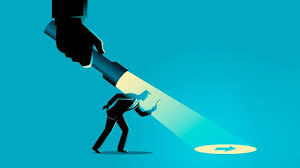We’ve all been taught the importance of “discovery.” It’s that process where we pummel our prospects with questions to discover their needs, priorities, and their decision-making process.
It’s in the discovery process that we actually figure out what it takes to win–earn the customer’s business.
But there are several problems with the way we do this:
First, too often, we really don’t do discovery, we focus on pitching our products and companies, not taking the time to understand what the customer is trying to achieve. Instead, arrogantly, we leave it to the customer to figure out whether what we do helps them with what they want to do.
Sometimes, we do better, we ask them questions about their needs, priorities, goals, challenges, etc. We’re taught how to drill down in our questions, to quantify and qualify our understanding of what the customer needs. This provides us the context in which we will later present our solutions, demonstrating how we help them achieve their goals and create value for them.
In our discovery, we are, too often, doing it selectively, discovering just what we think we need to start pitching our products. And we race through our discover, because what we really care about is pitching our products.
But there’s an implicit assumption in this process, it’s the assumption the customer knows what they need. It’s the assumption they know how to buy–not just select a solution, but the know what they should be looking for, how to align the agendas and priorities of the buying committee, and what they need to do.
There’s a problem with “our” discovery process! It’s because we think it’s “ours.” In reality, it is more about the customer’s discovery.
The customer is trying to learn. They may have done some research–beginning their learning journey. But the solutions are just a small part of what the customer needs to learn—and often they don’t know what they need to learn.
More importantly, they need to discover a lot more than just learning about solutions. They are addressing a much bigger issue than selecting a solution. They are looking to solve a business problem, address a new opportunity, grow/improve their business, achieve goals and dreams. These are much broader than a product. But they are what the customer cares about–or needs to care about.
They are also trying to discover how this impacts the rest of their organization—who else is involved, who should be involved, how/why they need to be part of the problem solving process? They are trying to figure out how to get alignment with all these parties–what ate they trying to achieve, what are their agendas, how does the team work together?
But customers struggle in their process–they’ve probably never done it before, at least for this problem/opportunity. They may not know how to organize themselves. They may not know what they should be trying to learn. They may feel they are alone, not knowing how others have addressed similar problems.
Too often, they get lost. 53% of them never get to “end of job.”
And that’s tragic, it’s an opportunity they have been unable to address, just because they didn’t know how to address it and to manage themselves to a solution.
What an opportunity! As sales people, we’ve seen this same situation dozens of times before. We know how to help the customer with their discovery.
What if we focused not just on our discovery, but also helped the customer with their discovery? What if we made the discovery process less about what we need to know, and more about what we and the customer learn together?

I have always seen Discovery as half the Job.
Development is the SECOND half.
Discovery of a Problem, next stage is NOT Discovery of a Solution {always Ours!}
The stage after Discovery of a problem is DEVELOPMENT of the Problem. Clarifying and Amplifying until we share it with the Prospect.
Then we can TOGETHER Discover, then DEVELOP the Solution.
It takes a lot more effort, but it delivers MUCH better results.
Great Post Dave.
Thanks, as always, Brian.